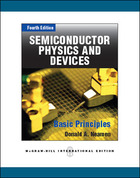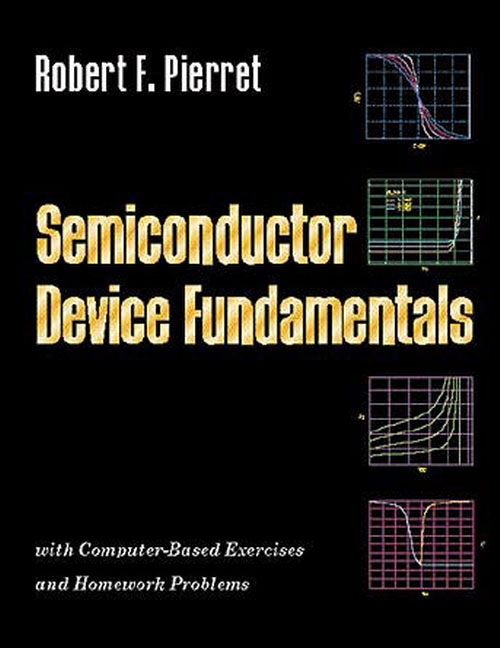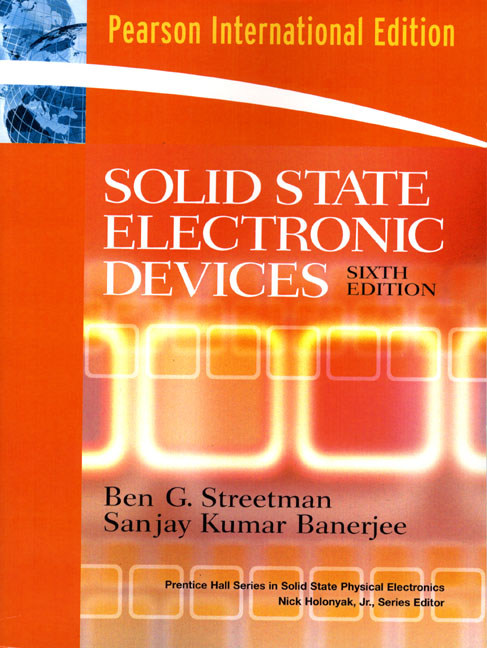The course syllabus contains changes
See changesCourse syllabus adopted 2019-02-07 by Head of Programme (or corresponding).
Overview
- Swedish nameMikroelektronik
- CodeMCC086
- Credits7.5 Credits
- OwnerTKELT
- Education cycleFirst-cycle
- Main field of studyElectrical Engineering
- DepartmentMICROTECHNOLOGY AND NANOSCIENCE
- GradingTH - Pass with distinction (5), Pass with credit (4), Pass (3), Fail
Course round 1
- Teaching language Swedish
- Application code 50124
- Maximum participants80
- Block schedule
- Open for exchange studentsNo
- Only students with the course round in the programme overview.
Credit distribution
Module | Sp1 | Sp2 | Sp3 | Sp4 | Summer | Not Sp | Examination dates |
|---|---|---|---|---|---|---|---|
| 0111 Examination 3 c Grading: TH | 3 c |
| |||||
| 0211 Project 3 c Grading: TH | 3 c | ||||||
| 0311 Written and oral assignments 1.5 c Grading: UG | 1.5 c |
In programmes
- MPEES - EMBEDDED ELECTRONIC SYSTEM DESIGN, MSC PROGR, Year 2 (elective)
- TKELT - ELECTRICAL ENGINEERING, Year 3 (compulsory)
Examiner
 Per Lundgren
Per Lundgren- Studierektor, Microtechnology and Nanoscience
Eligibility
General entry requirements for bachelor's level (first cycle)Applicants enrolled in a programme at Chalmers where the course is included in the study programme are exempted from fulfilling the requirements above.
Specific entry requirements
The same as for the programme that owns the course.Applicants enrolled in a programme at Chalmers where the course is included in the study programme are exempted from fulfilling the requirements above.
Course specific prerequisites
Physics (FFY401 and FFY143), Circuit Analysis (EMI083, EMI084), Electronics (ETI146), Electromagnetism (EEM015) and Calculus in one variable (TMV136, TMV137)Aim
The course is an introduction to physical modelling of semiconductor devices. The main purpose is twofold: first, the participants should develop and demonstrate the ability to make use of their knowledge of physics and electrical circuit theory to explain the electrical characteristics for various important semiconductor devices, and second, they should be able to independently use basic semiconductor physics to successfully address technical problems involving semiconductor devices.Learning outcomes (after completion of the course the student should be able to)
show sufficient familiarity with basic semiconductor concepts and relationships to identify their applicability for making reasonable inferences in simple, previously unfamiliar problemsuse adequate arguments to motivate the choice of design for a basic semiconductor device with regards to functionality, fabrication and ethical considerations related to its use
conduct electrical measurements (with time restrictions in a measurement lab) on diodes and transistors and use the resulting data to extract model parameters
orally describe the procedure for determining manufacturing relevant parameters in diode and transistor models
illustrate the consistency between model and measurement data by plotting in Excel or MATLAB
reason in a constructively simplified manner about fundamental dependencies of the current limiting mechanisms in semiconductor devices (e. g. apply 'straight-line physics'), where special emphasis is put on modeling with regards to manufacturing-related parameters
It is also possible that one could:
describe the main steps in the fabrication process of semiconductor devices and integrated circuitsmake reasonable assumptions and simplifications in novel, realistic problems concerning semiconductor devices to obtain quantitatively reasonable results using reference literature
Basic concepts and relationships :
energy band diagrams, denisty of state, distribution functions, temperature, recombination, generation, doping, law of mass action, conductivity, mobility, drift , diffusion, Einstein's relationship, velocity saturation, depletion approximation, depletion capacitance, built-in voltage, ideal diode equation, avalanche and zenerbreakdown, threshold voltage, saturation, gradual channelapproximation, subthreshold current, channel length- and basewidth modulation, cut-off frequencySemiconductor devices include:
resistors, thermistors
rectifier diodes, varactors, solar cells
field effect transistors ( MOSFETs), bipolar transistors
Content
- Basic semiconductor properties (repetition of expected knowledge from physics courses) :
- Intrinsic/extrinsic semiconductors, doping, impurities (donors / acceptors ); charge carriers: holes and electrons, majority and minority carriers; mobility, conductivity.
- Band theory, Fermi-Dirac distribution function and the concept fermipotential .
- The temperature dependence of mobility and carrier densities
- pn junction (repetition of the expected prior knowledge of electronics courses) :
- Ideal Diode , piecewise linear diode model ( contact potential and series resistance ) ,
- Simple diode circuits with diode rectifier,
- Ideal diode equation, ideality factor, small signal model, dynamic resistance.
- pn junction (new material):
- methods for extracting model parameters from measurements on the diodes,
- contact potential, the balance between diffusion and drift currents,
- band diagram, the law of the junction, low level injection of minority carriers, diffusion length,
- depletion layer, breakdown mechanisms,
- the diode as nonlinear capacitance, Gauss' law, parallel plate capacitor,
- minority carrier storage and diode transient .
- pn junction in applications :
- varactors and solar cells
- MOS transistor (repetition of the expected prior knowledge from electronics courses) :
- MOS transistor voltage-controlled resistance and power source.
- Piecewise linear model and Shockley quadratic power model.
- Output and transfer characteristics .
- The difference between large and small signal models.
- The MOS transistor ( new material ) :
- Methods for the extraction of model parameters from measured data, "straight-line physics" least squares fit .
- MOS capacitance, accumulation, depletion, and inversion. Gauss law
- Connecting of series connected capacitors.
- MOS transistor band diagram. The theory behind the current model in strong inversion. Gradual channel approximation.
- Power Model in weak inversion. Subtröskelströmmar.
- Channel length modulation, Early voltage .
- Second order effects (non-compulsory):
- velocity saturation,
- mobility roll-off,
- drain inducerad barrier lowering (DIBL),
- body effect,
- Plotting charts and graphs in Matlab and/or Excel.
- Bipolar Transistor :
- Fundamental function and structure
- Energy band diagram
- Current amplification
- Cut-off frequency
- Emphasis on engineering skills and dimensional analysis in calculations .
- Emerging Technology. Nanoelectronics .
- Manufacturing technology for CMOS integrated circuits
Organisation
The course is based on a project linked to an early written assignment and a lab assignment. The project work is carried out in groups of two. The two parts of the project itself (diode amd MOSFET) are presented orally based on written hand-ins and are graded. At the end of the course there is a written exam. During the course, aid is provided in the form of scheduled tutorials, exercises and lectures. For each part of the course there is a diagnostic self-test on the course website.The first two weeks cover basic semiconductor properties as conductivity and fermi statistics in a traditional way. Measurements on diodes and transistors are conducted to collect data for the project.
Study week three and four are devoted to the diode portion of the project, and during study week five and six the focus is on the MOSFET project part.
Study week seven and eight deal with alternative transistor structures such as bipolar transistors and novel materials from topical research and also give room for repetition.
Study week seven and eight deal with alternative transistor structures such as bipolar transistors and novel materials from topical research and also give room for repetition.
Literature
Kjell Jeppson: Kurshäfte i Mikroelektronik, 2012Donald A. Neamen: Semiconductor Physics and Devices , McGraw-Hill (2012)

Alternative options are for example:
Robert F. Pierret: Semiconductor Device Fundamentals, Prentice Hall (1996)

Ben G. Streetman, Solid State Electronic Devices, Pearson (2010)

Examination including compulsory elements
The course consists of three modules that are examined separately. The final grade is calculated by weighing the rating of the project and the score on the exam. It will be possible to receive bouns point to the exam in conjunction with the oral examinations of the project assignments.The written exam consists of two parts. In the first part no aids are allowed. It consists of two assignments. The first one comprises four sub-problems that represent various fundamental aspects of the course. These sub-problems must be adequately treated to pass, and for the rest of the exam to be assessed. The second assignment deals with manufacturing technology. The second part contains three problems that can be solved with the course booklet, course book, a collection of formulas and a sheet of your own notes as permitted aids.
The course syllabus contains changes
- Changes to examination:
- 2020-09-30: Grade raising No longer grade raising by GRULG
- 2020-09-30: Grade raising No longer grade raising by GRULG